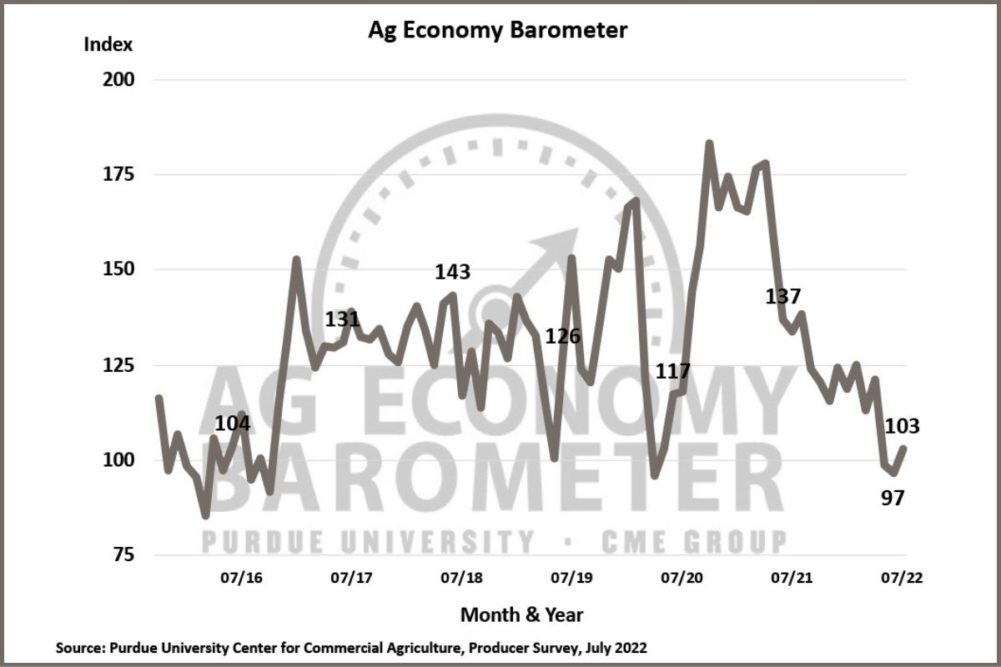WEST LAFAYETTE, INDIANA, US — US agriculture producers were feeling a little more confident in July compared to the previous month but aren’t as positive as they were at the same time last year, according to the latest Purdue University/CME Group Ag Economy Barometer.
The barometer rose 6 points to 103 in July, with producers somewhat more optimistic about current and future economic conditions on their farms. The Ag Economy Barometer is calculated each month from 400 US agricultural producers’ responses to a telephone survey. This month’s survey was conducted between July 11-15.
Compared to a year earlier, the indices were 23% to 24% lower.
“Even though we saw a slight uptick in sentiment this month, there is still a tremendous amount of uncertainty in the agricultural economy,” said James Mintert, the barometer’s principal investigator and director of Purdue University’s Center for Commercial Agriculture. “Key commodity prices, including wheat, corn and soybeans, all weakened during the month and producers remain concerned over rising input prices and input availability.”
Farm operators in this month’s survey voiced concerns about several key issues affecting their operation, including: higher input prices (42% of respondents), lower crop prices (19% of respondents), rising interest rates (17% of respondents), and availability of inputs (15% of respondents).
Producers remain uncertain over their expectations for crop input prices over the next 12 months. In July, 18% of crop producers said they expect 2023’s crop input prices to decline between 1% and 10% when compared to 2022’s prices, versus 12% who felt that way in June. Meanwhile, 26% of respondents in July said they expect 2023’s prices to rise by 10% or more, compared to 38% who expected a crop input price rise of that magnitude in June.
The rise in input costs is leading some producers to reassess their cropping plans for the upcoming year. In this month’s survey, nearly one out of four (24%) of crop producers said that as a result of the rise in input costs they plan to change their farm’s crop mix in 2023.
The Farm Capital Investment Index remains near its record low, up one point to a reading of 36 in July. Respondents said now was a bad time for large investments due to an increase in prices, uncertainty about farm profitability and rising interest rates.






